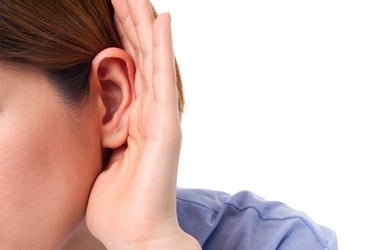Hearing the world around us clearly is something that we often taken for granted until we, or someone we love, begins to lose the ability. Chances are, we all know someone struggling with such a problem. After all, about 20 percent of the American population suffer from hearing loss to some degree. For many, it begins as an adult; for others, it is present from childhood. In some cases, loss of hearing is congenital, while in others, it may be due to trauma. In short, the list of potential causes of hearing loss is about as wide and varied as the individuals who are impacted by it. Still, the condition can be broadly categorized into the three main forms:
Conductive Hearing Loss
In cases where hearing loss is attributable to problems arising from the ear canal, middle ear, or ear drum, it is considered a form of conductive hearing loss. Potential causes may include:
- Malformation of the ear or its structures
- Ear infection
- Improper function of the Eustachian tubes
- Ear wax
- Allergies
- Perforated ear drum
- Otosclerosis (inability of one of the three small bones in the middle ear to vibrate freely)
- Benign tumor
Often, these issues are improved or corrected with medication and/or surgical intervention.
Sensorineural Hearing Loss
This type of hearing loss is also known as nerve-related hearing loss and results from problems within the inner ear. Common causes of sensorineural hearing loss include:
- Exposure to excessively loud noises
- Virus or disease
- Head trauma
- Aging
- Autoimmune disease affecting the inner ear
- Genetic hearing loss
- Malformation of the inner ear
- Meniere’s disease
- Tumor
In some cases, hearing loss may be mitigated with treatments such as corticosteroids. In other instances, surgical correction may be needed, and in the most common forms of irreversible sensorineural hearing loss, hearing aids may be necessary.
Mixed Hearing Loss
At times, hearing loss cannot be categorized solely as conductive or sensorineural in nature, as elements of both exist. In these cases, there may be damage to the middle or outer ear, as well as to the inner ear. For instance, if an individual is already suffering from hearing difficulties due to exposure to loud noises, but fluid within the middle ear is exacerbating the problem, this would be considered a case of mixed hearing loss. In such cases, it is often wise to address the conductive component first, as doing so may help clear the way for a patient to become a hearing aid candidate.
If you find that you or a loved one are increasingly struggling to hear clearly, it may be time to be seen by a specialist. By scheduling an appointment with an audiologist, you can determine the nature and source of hearing loss, as well as discover the viable treatment options available to you. To learn more about these conditions and if one is impacting you, contact the Lane Audiology Clinic to request a consultation.
Heather O’Laughlin, Au.D.
6110 Main Street, Suite D, Zachary



.png?width=110&height=110&name=lane%20badge%20(1).png)
